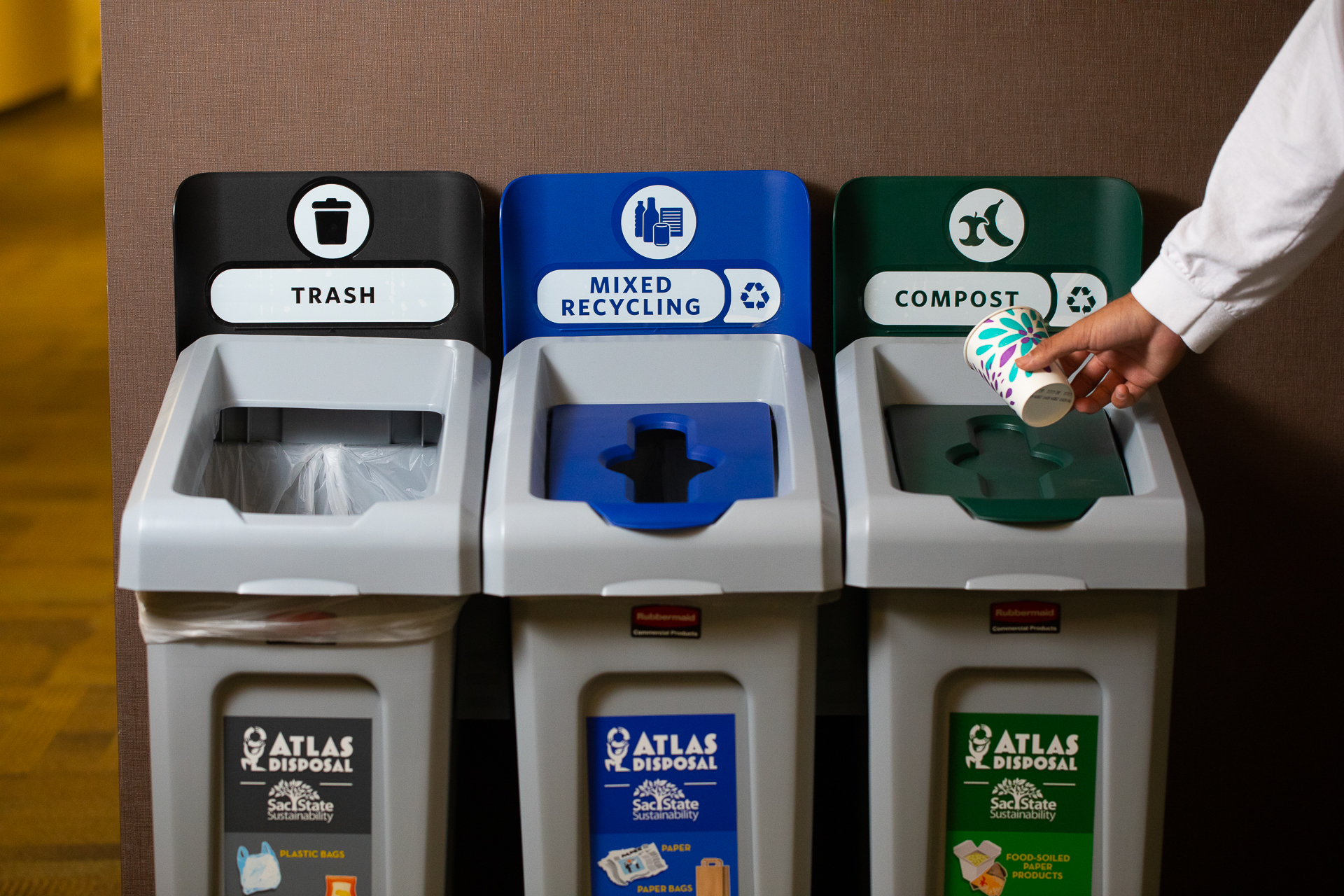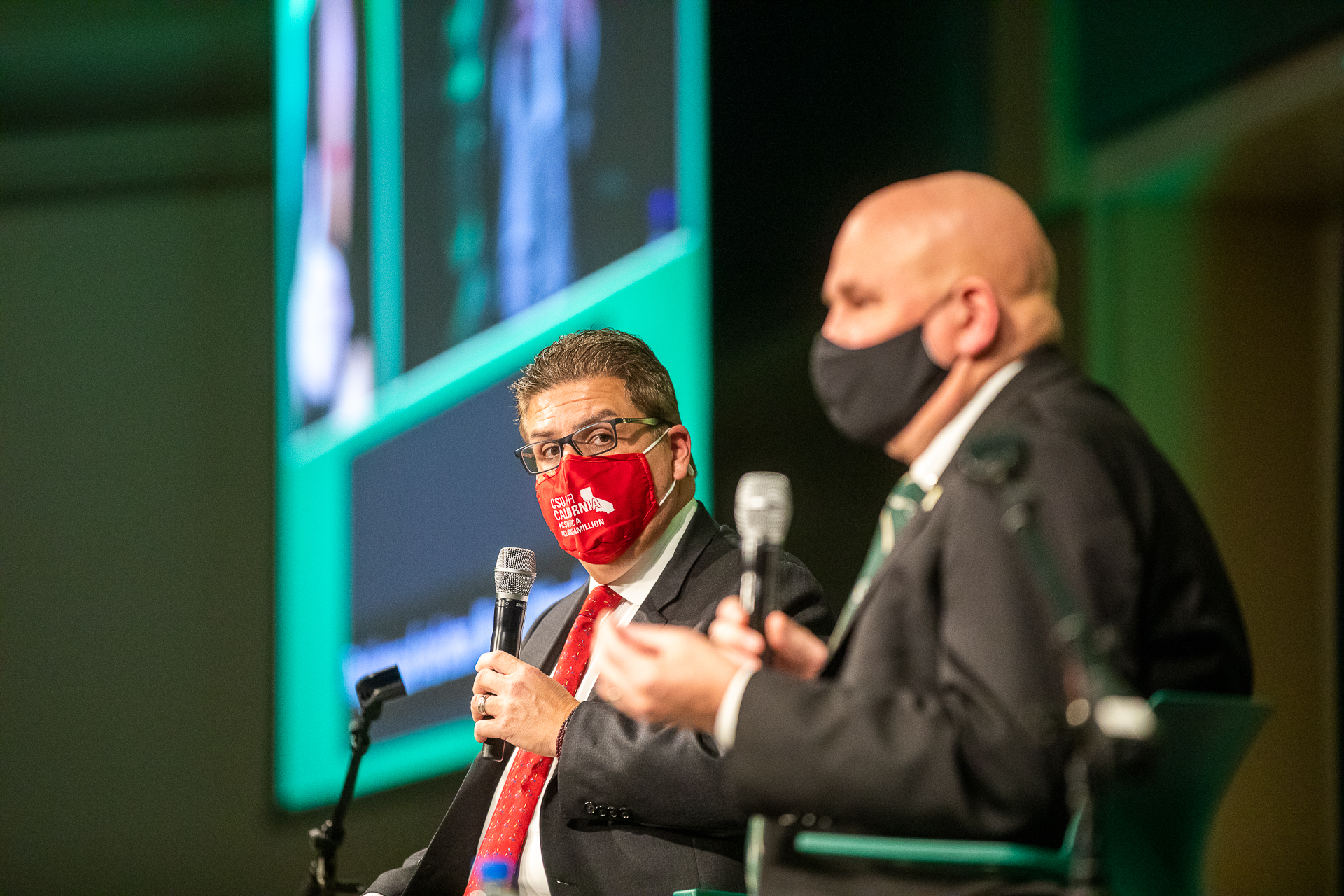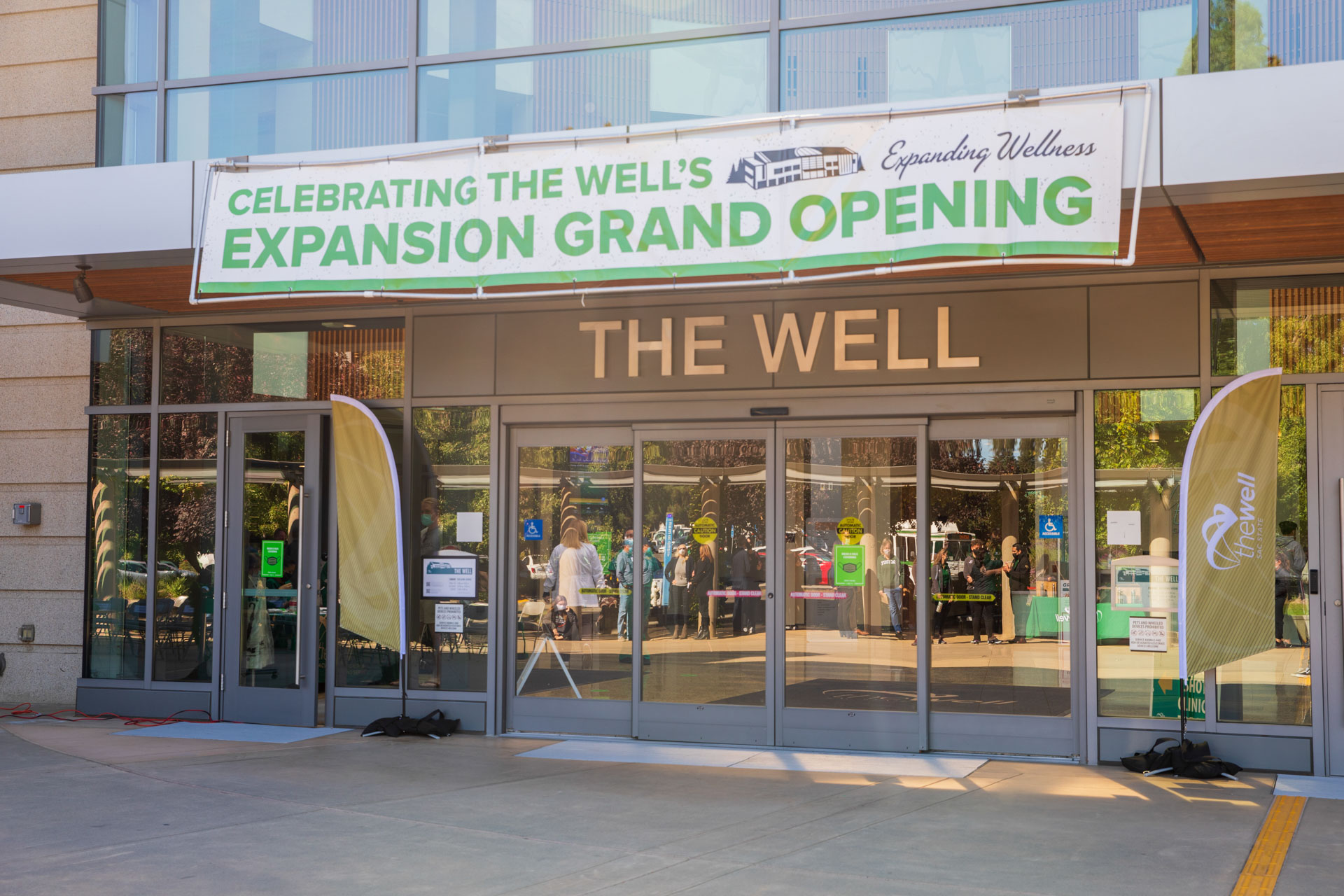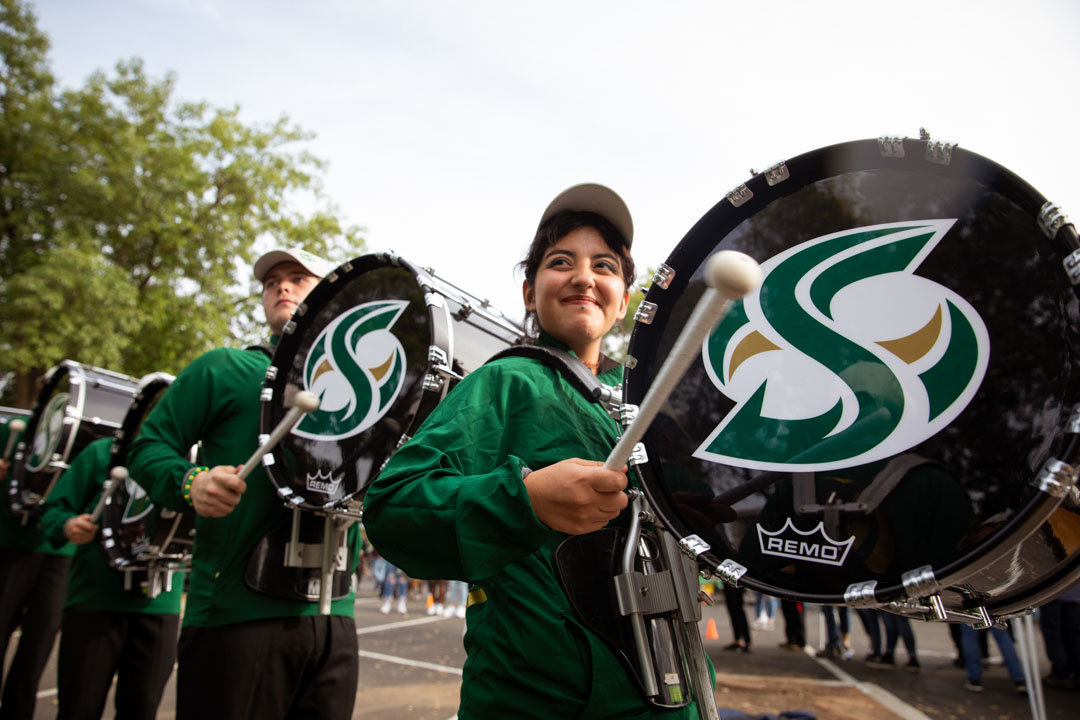Story Content
Sac State adds nearly 500 composting bins as part of carbon-neutrality push

November 16, 2021
Sacramento State is stepping up in its commitment to achieve full carbon neutrality by 2040, five years ahead of California’s deadline.
To that end, the University has installed nearly 500 “three-stream” recycling bins that provide the campus community a place to dispose of post-consumer food waste, commonly known as “compost,” along with trash and mixed recyclables. The bins also allow the University to comply with a statewide organics recycling mandate that goes into effect Saturday, Jan. 1.
The University’s organics recycling program is expected to divert approximately 60 tons of food waste from the landfill each year.
Composting is just the latest part of Sac State’s sustainability efforts, which include a campus-wide lighting retrofit and a solar-array project that began on Lot 10 and eventually will expand to two additional parking structures.
Such efforts have not gone unnoticed. Earlier this year, Sac State earned a prestigious STARS Gold rating from the Association for the Advancement of Sustainability in Higher Education. High points were given for reducing campus greenhouse gas emissions to the lowest level in 20 years and for attaining certifications as a Tree Campus USA, a Bee Campus USA, and a Garden for Wildlife.
The association’s Sustainability Tracking, Assessment and Rating System, known as STARS, is a transparent, self-reporting framework that allows institutions to measure their sustainability success.
Also among the University’s growing number of awards and recognitions were three from the 2020 California Higher Education Energy-Efficiency and Sustainability Conference. Sacramento State’s premiere Student Climate Change Summit won the award for Best Practice in Student Sustainability. Sac State also won a best-practice award for the overall sustainable design of the Ernest E. Tschannen Science Complex and a sustainable-transportation award for Parking Structure 5.
Sac State continues to add to its urban forest by planting hundreds of trees, which remove 1.7 tons of pollution from the air, produce 237 tons of oxygen, and store more than 3,000 tons of carbon.
The composting program will similarly help combat emissions. Each year, Californians throw out 6 million tons of food waste, which creates environmentally harmful greenhouse gasses as it decomposes in landfills.
The University’s 480 new recycling bin sets are uniformly illustrated and direct the campus community to use the one marked “compost” for their food scraps, food-soiled paper products, fruits and vegetables, meat and bones, bread, and coffee grounds and filters.
“Now we have consistent bins and signage throughout the campus,” said Ryan Todd, director of Energy and Sustainability. “Your plastic food container will go into the recycling can. The thin plastic film wrapped around your sandwich will go into the trash bin. And leftover food goes into the compost can.”
Education is key to the program’s success, said Samantha Elizalde, president of Associated Students Inc.
“We all take part in helping our environment,” she said, “and it’s important that we educate ourselves and others on what is trash versus what is recyclable versus what is compostable.
“Our trash ends up somewhere, so we must do our part to make sure it ends up in the right place.”
Food scraps deposited in composting bins will be sent to an area pig farm to be used as feed, and to an anaerobic digester to be converted into bio-compacted natural gas fuel.
“Our trash ends up somewhere, so we must do our part to make sure it ends up in the right place.” - Samantha Elizalde, president, Associated Students Inc.
“As a higher education institution, we have a responsibility and obligation to reduce our carbon footprint,” said Jonathan Bowman, the University’s vice president for Administration and chief financial officer.
“At Sacramento State, we lead by example. Through a myriad of comprehensive changes we have made on this campus, we have seamlessly integrated sustainability into our day-to-day operations – actions that are embedded into the fabric of our University.”
In 2016, Sac State President Robert S. Nelsen signed Second Nature’s Carbon Commitment, pledging to reduce greenhouse gas emissions and achieve carbon neutrality on campus.
The University set a 2040 deadline, which is five years ahead of Sacramento’s and California’s goal to slash overall emissions to zero.
Sac State continues to make strides to that end with other projects such as massive lighting retrofits and expanded solar array installations.
While the campus was closed during the COVID-19 pandemic, crews worked to replace 5,000 incandescent bulbs in the University Library with one-third fewer, but much brighter, LED kits.
The $2.36 million project, funded primarily by the CSU Chancellor’s Office, reduced the Library’s energy usage by about 54.5% and saved Sac State an estimated $100,000 annually in energy costs.
The University recently received another $7 million from the Chancellor’s Office to retrofit the lighting in 27 campus buildings. The expected annual savings will be 4.6 million kilowatt hours (kWh) and more than $400,000 in energy costs.
Sac State completed the massive solar array installation on Lot 10, south of Hornet Stadium. The 3,979 solar panels will produce approximately 2.25 million kWh of power each year.
The University eventually will expand the solar project to Parking Structures 3 and 5, where a combined 2,886 panels will produce nearly 2 million kWh annually.
Once completed, renewable energy sources will provide about 17-20% of Sac State’s total annual power, and 30% during the summer months when solar is at highest production.
The $6.8 million solar project was funded by a power purchase agreement at no cost to Sacramento State.
The University had existing panels atop The WELL and the Library.
“We are doing so much because, as a campus, we can no longer focus on reducing one emissions source at a time,” Todd said. “We need to have a sustained, multipronged approach to emissions reductions, tackling a variety of sources at the same time.
“Sac State creates emissions from using energy, gas and generating waste. Unless we reduce emissions in each of those categories, we won’t achieve the goals we’ve set.”
Media Resources
Faculty/Staff Resources
Looking for a Faculty Expert?
Contact University Communications
(916) 217-8366
communications@csus.edu


